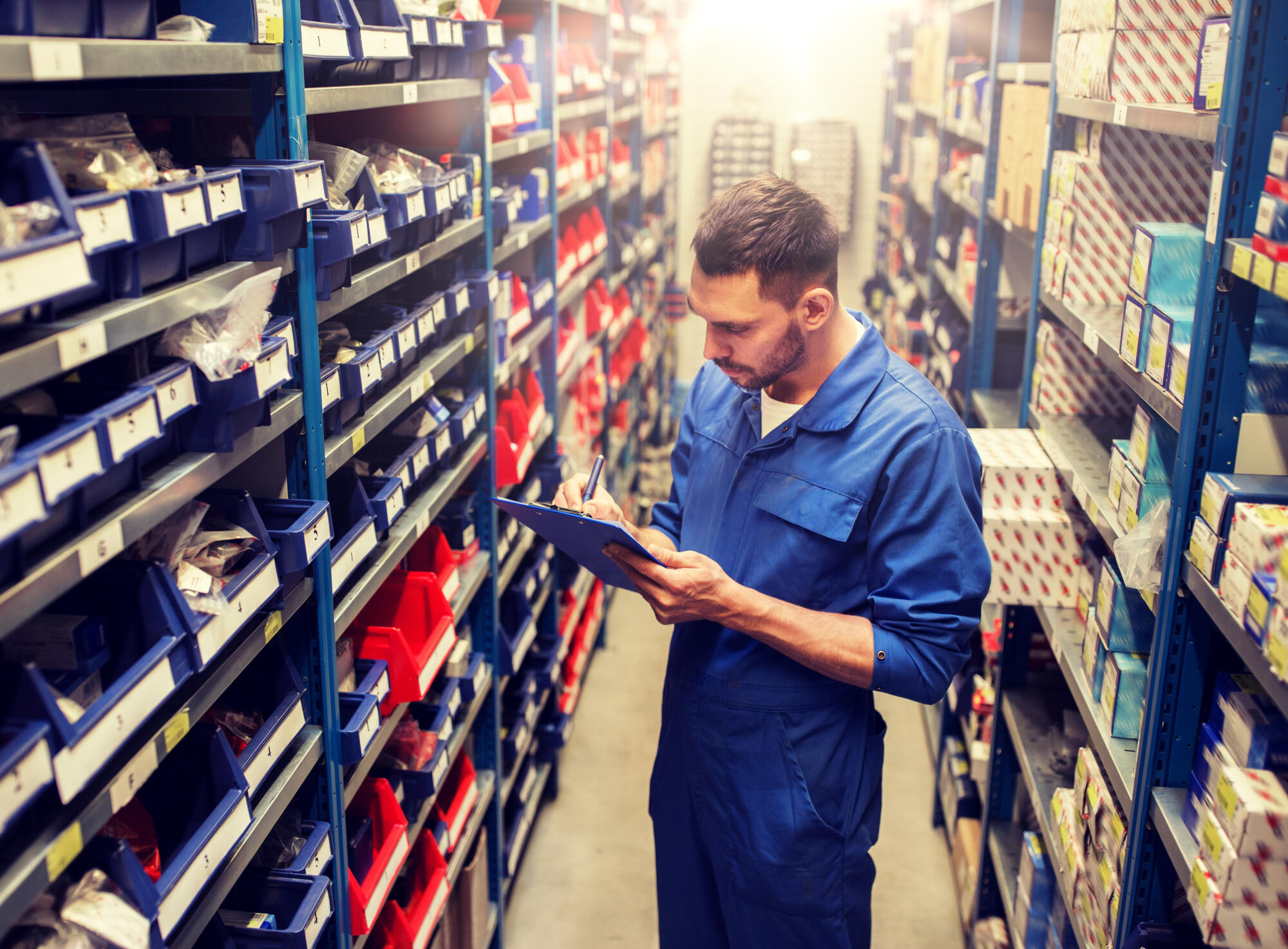BUSINESS
When should I replace my bumper instead of repairing it?

As a Jeep Wrangler owner, you take pride in your vehicle’s rugged capabilities and iconic style. The front bumper plays a crucial role in both form and function, protecting your Jeep while enhancing its off-road prowess. However, when your bumper sustains damage, you face a critical decision: repair or replace? This choice isn’t always straightforward, as factors like cost, extent of damage, and long-term durability come into play. In this article, we’ll explore the key considerations to help you determine when it’s time to bid farewell to your battered bumper and invest in a new one for your beloved Wrangler.
Signs It’s Time to Replace Your Jeep Wrangler Bumper
Visible Damage and Rust
When your Jeep Wrangler bumper shows significant dents, cracks, or rust, it’s time to consider a replacement. Rust, in particular, can spread quickly and compromise the bumper’s structural integrity. If you notice deep gouges or large areas of corrosion, replacing the bumper is often more cost-effective than attempting repairs.
Compromised Safety Features
Modern Jeep Wrangler bumpers often incorporate safety features like sensors and cameras. If these components are damaged or malfunctioning due to bumper issues, replacement becomes crucial. A properly functioning bumper is essential for maintaining your vehicle’s safety systems and protecting you in the event of a collision.
Misalignment and Mounting Issues
If your bumper is noticeably misaligned or has loose mounting points, it may indicate underlying structural damage. This can affect your Jeep’s aerodynamics and fuel efficiency. When realignment attempts to fail or mounting issues persist, replacing the bumper ensures proper fitment and optimal performance of your Wrangler.
Choosing the Right Jeep Wrangler Replacement Bumper
Assessing Your Needs
Choosing the right Jeep Wrangler bumper involves considering your driving habits and the type of terrain you prefer. Are you an off-road enthusiast tackling rocky trails, or do you primarily cruise city streets? Your usage will dictate the ideal bumper material, design, and features.
For hardcore off-roaders, a sturdy steel bumper with integrated winch plates and D-ring mounts might be essential. Urban drivers, however, may prefer a sleeker, lightweight aluminum option that maintains the Wrangler’s iconic look without compromising fuel efficiency.
Compatibility and Installation
Ensure the replacement bumper is compatible with your specific Jeep Wrangler model year and trim level. Many aftermarket bumpers are designed for easy bolt-on installation, but some may require minor modifications.
Consider whether the new bumper will interfere with existing accessories or impact your vehicle’s approach angle. It’s also crucial to check if the bumper meets local regulations regarding pedestrian safety and light placement.
By carefully evaluating your needs and the bumper’s specifications, you’ll find the perfect balance of form and function for your Jeep Wrangler.
What is a Rear Bumper?
A rear bumpers is a protective panel located at the back of a vehicle. Its primary function is to absorb and mitigate the impact in the event of a collision, protecting both the vehicle’s structure and its occupants. Rear bumpers are typically made from materials like steel, aluminum, or plastic, and they often incorporate additional features such as sensors and lights.
Benefits of Rear Bumpers
- Impact Protection:
Rear bumpers are designed to absorb and distribute the force of a collision, reducing the risk of damage to the vehicle’s rear end and minimizing injuries to passengers.
- Enhanced Safety Features:
Many rear bumpers come equipped with integrated sensors and cameras that assist with parking and reversing, helping drivers avoid accidents and improve overall safety.
- Aesthetic Improvement:
A well-designed rear bumper can significantly enhance the vehicle’s appearance, adding a touch of style and sophistication.
- Increased Resale Value:
Vehicles equipped with high-quality or custom rear bumpers often have higher resale values due to their enhanced features and better protection.
- Durability:
Heavy-duty and custom rear bumpers offer superior durability, making them suitable for rugged conditions and off-road adventures.
Understanding the Cost and Benefits of Jeep Bumper Replacement
If you’re a Jeep owner, you know the importance of keeping your vehicle in top shape, especially if you frequently venture off-road. One critical aspect of maintenance is understanding the front bumper replacement cost. This expense can vary widely, generally depending on factors such as the type of bumper, labor costs, and whether you opt for OEM (original equipment manufacturer) or aftermarket parts.
Jeep bumpers are designed to endure tough conditions, but even the sturdiest bumpers can sustain damage over time. Upgrading to offroad bumpers not only enhances the durability of your Jeep but also improves its functionality and appearance. Offroad bumpers are specifically designed to handle rough terrains, offering better protection and more utility than standard bumpers.
Investing in high-quality offroad bumpers can save you money in the long run by reducing the frequency of replacements and repairs. These bumpers are built to withstand impacts that would typically damage standard bumpers, making them a smart choice for Jeep enthusiasts who love challenging trails.
Conclusion
As you weigh the decision to repair or replace your Jeep Wrangler’s bumper, consider the extent of damage, age of your vehicle, and long-term plans. While minor dents may be repairable, significant structural damage often warrants replacement for optimal safety and performance. Remember that aftermarket bumpers can enhance your Wrangler’s off-road capabilities and aesthetics. Ultimately, consult a qualified mechanic to assess the damage and provide expert recommendations. By making an informed choice, you’ll ensure your Jeep Wrangler continues to serve you well on and off the trail, maintaining its rugged charm and reliable performance for years to come.
BUSINESS
Tips for Choosing the Right Commercial Cleaning Company

Maintaining a clean and sanitary work environment is important for employee health and creating a professional image for your business. Whether you run a corporate office, a retail store, or an industrial facility, hiring the right commercial cleaning company can significantly impact the efficiency and atmosphere of your space. But with so many providers on the market, making the right choice can feel overwhelming. Not all cleaning services are created equal, and selecting the wrong one could lead to inconsistent results, poor communication, or even health code violations. To help you make an informed decision, this blog outlines six critical tips that will guide you toward choosing a reliable, reputable, and efficient commercial cleaning company that suits your specific needs.

Evaluate Industry Experience and Specialization
When selecting a commercial cleaning company, one of the most crucial factors to consider is their industry experience and specific areas of expertise. Not all cleaning services are suited for every environment/ What works for standard office space may not be effective for an industrial warehouse or healthcare facility. For example, cleaning commercial kitchens requires in-depth knowledge of food safety standards, grease removal, and sanitation protocols, making it vital to choose a provider with hands-on experience in that field. A company that understands the unique demands of your business environment is far more likely to deliver reliable, efficient, and compliant cleaning solutions that meet your expectations from the start.
Check for Certifications and Compliance Standards
Certifications and adherence to regulatory compliance are crucial indicators of a reputable cleaning company. Look for companies that possess industry certifications such as the ISSA Cleaning Industry Management Standard (CIMS) or Occupational Safety and Health Administration (OSHA) compliance. These accreditations reflect a commitment to safety, quality control, and standardized procedures. If your business requires environmentally friendly practices, verify that the cleaning provider uses green-certified products and follows eco-friendly protocols. Proper insurance coverage is a must. It protects you from liability in the event of damage or injury during the cleaning process.
Assess Customization and Service Flexibility
Every business has its own set of cleaning requirements and scheduling needs. A reliable commercial cleaning company should offer customizable services tailored to your preferences. Whether you need daily, weekly, or monthly service, or specific cleaning tasks like window washing, carpet cleaning, or post-event cleanup, the provider should be flexible enough to accommodate your routine without disrupting your business operations. Be wary of one-size-fits-all packages that don’t address your specific needs. During your initial consultation, request a detailed scope of services and ask if they are open to revisiting and adjusting the agreement as your needs evolve.
Review Reputation and Client Testimonials
Reputation is everything when it comes to service-based businesses. Take time to research each company’s reputation by reading online reviews, checking ratings on platforms like Google, Yelp, or the Better Business Bureau, and asking for client references. A company with mostly positive reviews and long-term clients is likely to deliver satisfactory service. When speaking with references, ask about the company’s reliability, communication, and attention to detail. Be cautious of companies with limited online presence or no verifiable feedback. A transparent, communicative, and dependable cleaning company will be proud to showcase its work and share testimonials.
Evaluate Staff Training and Supervision Protocols
A cleaning company is only as good as the people it employs. Inquire about the company’s hiring practices, staff training, and supervisory procedures. Do they perform background checks on employees? Are their staff trained in handling specific equipment, hazardous materials, or security protocols? Well-trained cleaners ensure effective service and reduce the risk of accidents or damage. Understand how the company supervises its teams. Is there an on-site manager or regular quality inspections? Companies that invest in continuous training and maintain high supervision standards tend to offer better and more consistent results over the long term.
Consider Communication and Responsiveness
Clear and consistent communication is a hallmark of any successful vendor-client relationship. Choose a commercial cleaning company that is responsive, professional, and easy to reach. From the first point of contact, assess how quickly they respond to inquiries, how thoroughly they answer your questions, and whether they assign a dedicated account manager. Good communication ensures that any issues or requests are handled promptly, reducing the likelihood of recurring problems or dissatisfaction. Ask about their emergency protocols. Can they handle last-minute cleaning requests or urgent sanitation needs? A company that values customer service will have a streamlined communication process and be ready to address your concerns at any time.

Finding the right commercial cleaning company involves more than just comparing prices. It requires careful evaluation of experience, certifications, service flexibility, reputation, staff training, and communication practices. By doing your due diligence and asking the right questions, you can partner with a cleaning service that enhances your business space’s cleanliness, health, and professional appearance. Investing time in the selection process now will save you from potential headaches down the road and ensure your work environment remains clean, safe, and welcoming.
BUSINESS
The Role of Genuine Auto Parts in Sustainable Vehicle Practices

Do you know how the parts in your car affect the planet?
When vehicles use genuine auto parts, they run better and last longer. These parts are made to fit the car exactly, so they don’t wear out too fast. That means fewer repairs and less waste.
Using the right parts also helps the engine work more efficiently. This can lower fuel use and cut pollution. Choosing genuine parts is not just good for your car.
Let’s explore how they help build a cleaner and greener world for everyone.
Helps Engines Run Clean
Using genuine auto parts helps your engine stay clean and run better. These parts are made to match your car’s needs, so they fit well and work the way they should. This helps the engine burn fuel properly, which means fewer harmful gases go into the air.
When engines run clean, they also stay in good shape longer. Clean engines don’t have to work as hard, which helps lower the chance of damage. This can lead to fewer trips to the repair shop.
Keeping the engine clean also helps the environment. It means less smoke, fewer pollutants, and better air quality. Using the right parts is a small choice that can lead to a big difference over time.
Reduces Frequent Replacements
Genuine auto parts last longer than cheap or fake parts. They are built to meet the car maker’s standards, so they do not break easily. This means you won’t need to replace them as often, which saves time and money.
Frequent replacements also create more waste. By using parts that last, you help lower the amount of old parts being thrown away. It also cuts down on the energy used to make new ones.
For example, many drivers shop auto parts at Roseville because they trust the quality. Getting the right part from the start helps avoid more repairs later. It’s a smart way to care for both your car and the planet.
Lowers Fuel Use
Using genuine parts helps your car use fuel more wisely. When parts fit well and work right, the engine doesn’t have to work too hard. This makes it easier to drive and cuts down on gas use.
Saving fuel is not just good for your wallet. It also means fewer trips to the gas station and less pollution in the air. Over time, small fuel savings can add up to a big impact.
Bad parts can cause problems with how your engine runs. They may lead to more fuel being burned than needed. Using real parts helps avoid that and supports greener driving every day.
Supports Recycling Systems
Many genuine auto parts can be recycled once they wear out. Makers often design them using materials that are easy to take apart and reuse. This helps reduce the need to mine or make new materials from scratch.
Recycling old car parts keeps waste out of landfills. It also helps save energy and lowers pollution from factories. By using real parts, you support this helpful cycle.
Car makers and shops often collect old parts for recycling. This is easier to do with genuine parts because they are labeled and sorted by type.
Why Smart Part Choices Matter
Choosing the right parts for your car helps both you and the world around you. When your car runs well, it uses less fuel and creates less waste. Small changes can lead to better habits and a cleaner future for everyone.
For more helpful blog posts like this one, visit the rest of our site!
BUSINESS
The Importance of Inventory Control in Warehouse Management

Inventory control is the backbone of successful warehouse management. It refers to the processes and strategies used to monitor, regulate, and manage stock levels, ensuring the right amount of inventory is available at the right time. Without proper inventory control, warehouses are prone to overstocking, understocking, and inaccurate data. As the global marketplace becomes increasingly fast-paced and competitive, having robust inventory control systems has become not just a logistical necessity but a strategic advantage. In this blog post, we’ll explore the various ways inventory control contributes to effective warehouse management, highlighting the critical role it plays in streamlining operations, boosting productivity, and maximizing profitability.

Minimizing Overstock and Stockouts
Balancing inventory levels is vital to avoid the costly problems of overstock and stockout. Overstock ties up valuable capital and warehouse space, leading to increased storage costs and potential product spoilage. Stockouts result in missed sales opportunities and unhappy customers. Effective inventory control relies on accurate tracking and demand forecasting to maintain this balance. Companies like tigermaterialhandling.com often emphasize the importance of real-time inventory data and smart replenishment strategies to help warehouses adjust stock levels proactively. By minimizing these extremes, businesses can optimize cash flow, improve customer satisfaction, and operate more efficiently without unnecessary inventory risks.
Enhancing Order Accuracy and Fulfillment Speed
Inventory control directly affects how quickly and accurately customer orders are processed. When inventory levels are well-managed and properly recorded, picking and packing processes become more efficient. Warehouse staff can locate items faster, leading to quicker turnaround times and fewer errors in order fulfillment. This efficiency is critical in maintaining customer satisfaction and loyalty, particularly in an era where next-day or even same-day shipping is often expected. Barcode scanning, RFID tags, and warehouse management systems (WMS) help automate these processes, reducing manual mistakes and boosting order accuracy. Effective inventory control shortens lead times and enhances service quality.
Improving Warehouse Space Utilization
Warehouses have limited space, and how that space is used can significantly impact operational efficiency. Without proper inventory control, products may be stored haphazardly, leading to congestion, misplaced stock, and increased handling times. Efficient inventory control enables better organization by categorizing products based on demand frequency, size, or storage requirements. This structured approach facilitates easy access to high-turnover items and optimal use of shelf space. Advanced systems can even recommend ideal slotting configurations, minimizing travel time within the warehouse. By streamlining storage practices, businesses can maximize existing space, delay or avoid expansion costs, and support smoother day-to-day operations.
Enabling Accurate Forecasting and Planning
Inventory control provides valuable data that feeds into demand forecasting and business planning efforts. When warehouse managers have a clear picture of inventory trends, such as seasonal demand patterns or slow-moving items, they can make informed decisions about procurement, staffing, and budget allocation. This data-driven approach minimizes the risk of reactive decision-making and supports long-term planning. For example, knowing when certain products typically experience peak demand can help in preparing stock levels and labor schedules in advance. Inventory control thus acts as a foundation for strategic planning, ensuring that warehouse operations align closely with broader business objectives.
Reducing Operational Costs and Waste
Uncontrolled inventory often leads to unnecessary expenses, such as storage costs, spoilage, and obsolescence. With efficient inventory control, these risks are greatly reduced. Businesses can track product expiration dates, rotate stock using FIFO (first-in, first-out) methods, and avoid the accumulation of redundant or obsolete items. Better forecasting and order planning mean fewer emergency purchases or expedited shipments, which are typically more expensive. Streamlining inventory reduces the labor required for inventory handling and audits. These efficiencies translate into significant cost savings, improving the financial health of the warehouse and the business as a whole.
Enhancing Visibility and Accountability
Visibility into inventory levels and movements is crucial for managing a transparent and accountable warehouse. Inventory control systems provide real-time tracking of products as they enter, move through, and exit the warehouse. This level of visibility reduces the likelihood of theft, loss, and administrative errors. It makes audits and compliance reporting more efficient and accurate. Clear documentation and digital records help hold employees accountable for stock management and make it easier to identify and resolve discrepancies. By fostering a culture of accountability, inventory control improves internal processes and external trust with stakeholders and customers.

Inventory control is far more than a logistical task. It is a strategic pillar that supports the efficiency, reliability, and profitability of warehouse operations. From minimizing costs to enhancing customer satisfaction, its impact is broad and critical. As warehouses continue to evolve with technology and shifting market demands, prioritizing strong inventory control practices will be key to staying competitive and achieving long-term success.

 Cartoon1 year ago
Cartoon1 year agoUnlocking the Potential of Nekopoi.care: A Comprehensive Guide

 Game1 year ago
Game1 year agoExploring Aopickleballthietke.com: Your Ultimate Pickleball Destination

 BUSINESS1 year ago
BUSINESS1 year agoWhat Companies Are In The Consumer Services Field

 BUSINESS1 year ago
BUSINESS1 year agoUnraveling the Mystery of 405 Howard Street San Francisco charge on Credit Card

 HOME IMPROVEMENT1 year ago
HOME IMPROVEMENT1 year agoVtrahe vs. Other Platforms: Which One Reigns Supreme?

 TECHNOLOGY1 year ago
TECHNOLOGY1 year agoThe Guide to Using Anon Vault for Secure Data Storage

 ENTERTAINMENT11 months ago
ENTERTAINMENT11 months agoUnderstanding Bunkr Album: A Comprehensive Guide

 ENTERTAINMENT1 year ago
ENTERTAINMENT1 year agoThe Epic Return: Revenge of the Iron-Blooded Sword Hound
















